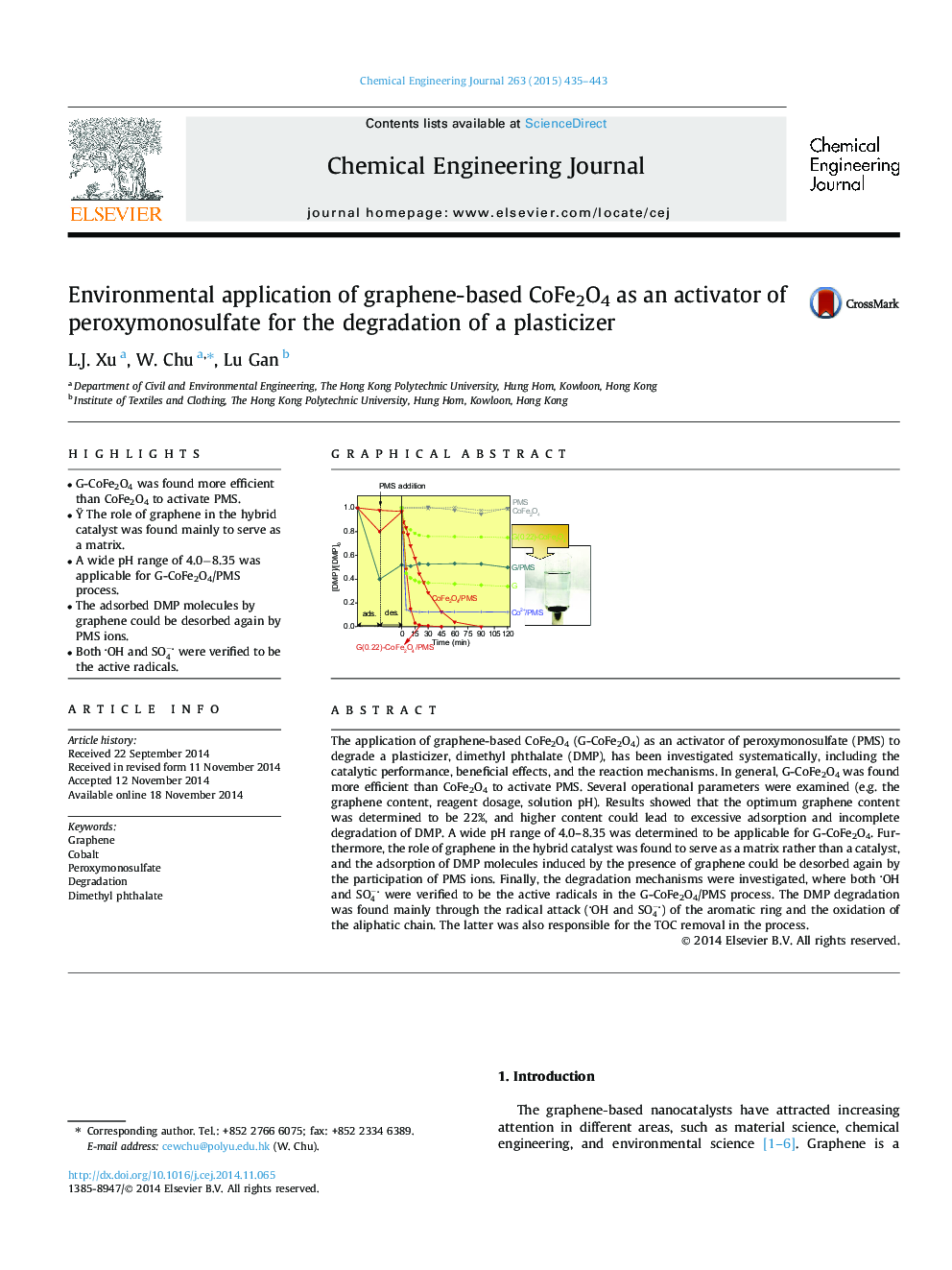| کد مقاله | کد نشریه | سال انتشار | مقاله انگلیسی | نسخه تمام متن |
|---|---|---|---|---|
| 146693 | 456376 | 2015 | 9 صفحه PDF | دانلود رایگان |

• G-CoFe2O4 was found more efficient than CoFe2O4 to activate PMS.
• Ÿ The role of graphene in the hybrid catalyst was found mainly to serve as a matrix.
• A wide pH range of 4.0−8.35 was applicable for G-CoFe2O4/PMS process.
• The adsorbed DMP molecules by graphene could be desorbed again by PMS ions.
• Both OH and SO4- were verified to be the active radicals.
The application of graphene-based CoFe2O4 (G-CoFe2O4) as an activator of peroxymonosulfate (PMS) to degrade a plasticizer, dimethyl phthalate (DMP), has been investigated systematically, including the catalytic performance, beneficial effects, and the reaction mechanisms. In general, G-CoFe2O4 was found more efficient than CoFe2O4 to activate PMS. Several operational parameters were examined (e.g. the graphene content, reagent dosage, solution pH). Results showed that the optimum graphene content was determined to be 22%, and higher content could lead to excessive adsorption and incomplete degradation of DMP. A wide pH range of 4.0–8.35 was determined to be applicable for G-CoFe2O4. Furthermore, the role of graphene in the hybrid catalyst was found to serve as a matrix rather than a catalyst, and the adsorption of DMP molecules induced by the presence of graphene could be desorbed again by the participation of PMS ions. Finally, the degradation mechanisms were investigated, where both OH and SO4- were verified to be the active radicals in the G-CoFe2O4/PMS process. The DMP degradation was found mainly through the radical attack (OH and SO4-) of the aromatic ring and the oxidation of the aliphatic chain. The latter was also responsible for the TOC removal in the process.
Figure optionsDownload as PowerPoint slide
Journal: Chemical Engineering Journal - Volume 263, 1 March 2015, Pages 435–443